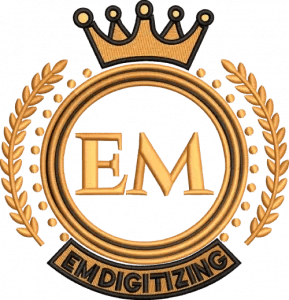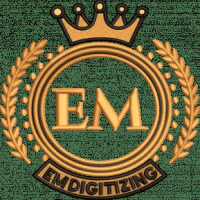How to Convert an Image to an Embroidery File: A Comprehensive Guide

Strong 8k brings an ultra-HD IPTV experience to your living room and your pocket.
Embroidery has evolved significantly over the years, transitioning from manual craftsmanship to precise machine-generated designs. If you’re looking to transform an image into an embroidery file, you’re not alone. Many businesses, hobbyists, and embroidery enthusiasts want to create custom designs from images. In this guide, Emdigitizing explains how to convert image to embroidery file and provides essential tips to streamline the process.
What Is an Embroidery File?
An embroidery file is a specialized file format that contains stitching instructions for embroidery machines. Unlike regular image files (like JPEGs or PNGs), these files include data on stitch types, directions, colors, and densities. Common embroidery file formats include DST, PES, EXP, and JEF, which are compatible with different embroidery machines such as Brother, Bernina, and Janome.
Why Convert an Image to an Embroidery File?
Converting images into embroidery files opens up endless creative possibilities. Whether you’re personalizing garments, creating branded merchandise, or producing intricate artworks, the ability to digitize images enables unique, high-quality results. Emdigitizing specializes in digitizing and vector art services to make this process seamless for our clients.
Choose the Right Image
Opt for high-quality images with clear details. Avoid low-resolution or blurry images as they can complicate the digitizing process.
Simplify complex designs, as overly intricate patterns might not translate well to stitching.
Select Suitable Embroidery Software
Popular embroidery software includes Wilcom, Hatch, and Brother’s PE-Design. These programs help convert images into stitch files.
Some tools have built-in auto-digitizing features, but manual adjustments usually yield better results.
Import the Image
Open the embroidery software and import the chosen image.
Ensure the dimensions are appropriate for your embroidery hoop and project.
Digitize the Image
Outline Creation: Trace the design to create outlines for stitching.
Assign Stitch Types: Different parts of the image may require varied stitch types, such as satin, fill, or running stitches.
Set Stitch Density and Direction: Adjust these settings to enhance the design’s appearance and durability.
Color Mapping: Assign thread colors to different sections of the design.
Test and Refine
Simulate the design within the software to identify potential issues.
Make necessary adjustments to ensure the file is error-free and optimized for stitching.
Save in the Appropriate Format
Save your file in the format compatible with your embroidery machine. For example, save as a DST file for Tajima machines or PES for Brother machines.
Test the Embroidery File
Stitch out a test run on similar material to check the design’s accuracy and appearance.
Adjust the file as needed to fix any issues.
Challenges of Converting Images to Embroidery Files
Complex Designs: Highly detailed images may need simplification to be suitable for embroidery.
File Compatibility: Different embroidery machines require specific file formats.
Stitch Quality: Poor digitizing can lead to thread breakage, puckering, or inconsistent stitches.
Why Choose Emdigitizing for Your Embroidery File Needs?
At Emdigitizing, we understand that not everyone has the time, tools, or expertise to convert images into professional embroidery files. That’s where we come in. Here’s why our services stand out:
Expertise: Our skilled digitizers create high-quality files tailored to your needs.
Customization: We work with your image and provide tailored solutions for various embroidery projects.
Fast Turnaround: We deliver files quickly without compromising quality.
Affordable Pricing: Our services are competitively priced to fit every budget.
Final Thoughts
Converting an image to an embroidery file is an essential skill for anyone involved in embroidery, but it requires the right tools, knowledge, and expertise. If you’re looking for professional assistance, Emdigitizing is here to help. We specialize in digitizing and vector art services, ensuring your designs come to life with precision and beauty. Contact us today to get started on your next embroidery project! FAQs
1. What types of images can be converted into embroidery files?
Most image formats like JPEG, PNG, and BMP can be digitized. However, the design’s complexity and resolution significantly impact the final result.
2. What file formats do embroidery machines use?
Common formats include DST, PES, EXP, JEF, and VP3. The choice depends on your embroidery machine’s brand and model.
3. Can I use auto-digitizing tools for conversion?
Auto-digitizing tools can provide a basic conversion, but manual digitizing ensures better accuracy, stitch quality, and design customization.
4. How long does it take to convert an image to an embroidery file?
The time required depends on the design’s complexity. Simple designs can take a few hours, while intricate ones may require more time.
5. Why should I choose professional digitizing services?
Professional digitizers have the expertise to optimize designs for embroidery, ensuring high-quality results and saving you time and effort.
Note: IndiBlogHub features both user-submitted and editorial content. We do not verify third-party contributions. Read our Disclaimer and Privacy Policyfor details.


